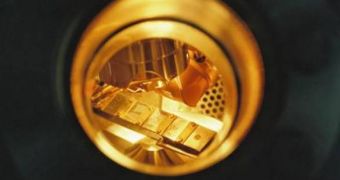Biochips are most likely among the most important medical instruments that appeared over the past few years, on account of the fact that they can analyze samples looking for a variety of contaminants, and can provide rapid results. Made up of miniaturized test sites (microarrays) on a solid substrate, these chips could become even smaller in the future, and cheaper to mass-produce. And that day may not be so far out, researchers from the Fraunhofer Institute for Applied Polymer Research IAP, in Germany, reveal. They have created a gel that is able to make proteins feel “at home” on biochips.
Apparently, this is one of the most important things about such a device, especially if it's one laden with proteins. The whole idea about proteins is that they have a 3D structure, which they use to interact with various molecules, or to control biological processes inside the human body. However, if they were to bind with the substrate on a biochip, they would lose their specific structure, and would become useless, or worse, destroy its own structure, tainting the results of the analysis.
Now, experts from the Potsdam-Golm-based Fraunhofer Institute have managed to solve this issue. “We have developed a gel – a network of organic molecules – that we can apply to the surface of the biochip. This gel layer is only about 100 to 500 nano-meters thick and consists mainly of water. We thus make the protein believe that it is in a solution, even though it is chemically connected to the network. It feels as if it is in its natural environment and continues to function even though it is on a biochip,” IAP Group Manager Dr. Andreas Hollander explains.
According to the researchers, the new gel that has been developed in Germany can be easily mass-produced with existing technologies, and there is more than one way of doing this. Firstly, the complete chains of polymers are chemically drawn to the substrate surface, and attached there, while, secondly, the polymers are built on the substrate piece-by-piece. “Our technique is a mixture of the two known methods. We use larger molecular building blocks to build up the network on the surface,” IAP doctoral student Falko Pippig adds.
Because of the thinness if the new hydrogel, substances applied on it can find their way to the proteins on the biochips very rapidly and accurately. The proteins are not stuck in the gel per se, they are rather only marginally attached to it, which allows them to retain the behavior they would have otherwise had, if they had floated “freely” in a solution.

 14 DAY TRIAL //
14 DAY TRIAL //